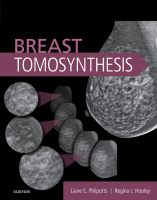Physical Address
304 North Cardinal St.
Dorchester Center, MA 02124

Note: Tomosynthesis video files are included in the e-book version. Chapter 1 Chapter 3 Chapter 5 You’re Reading a Preview Become a Clinical Tree membership for Full access and enjoy Unlimited articles Become membership If you are a member. Log…

Similar to the need for magnetic resonance imaging (MRI) biopsy capability in a practice that performs breast MRI, the need for tomosynthesis-guided breast biopsies in a practice that uses tomosynthesis is inevitable because there are certain lesions seen only on…

Male patients are not uncommon in breast imaging centers, where they usually present with clinical symptoms, including breast lumps, pain, or focal swelling. Men are usually distressed by these symptoms and are uncomfortable while in the department. Expediting the imaging…

Postoperative changes in the breast are commonly encountered. Many women presenting for mammography have undergone past procedures, ranging from augmentation or reduction to benign biopsies (needle and/or surgical) or cancer treatments (lumpectomy, mastectomy, and adjuvant radiation therapy). These procedures leave…

Tomosynthesis has revolutionized the practice of mammography. Beyond the reduction of false-positive recalls and increased cancer detection in screening, tomosynthesis can also improve the diagnostic workflow. Work-ups are abbreviated and expedited because fewer additional images are required to fully characterize…

With its inherent ability to decrease the masking effect of overlying fibroglandular tissue, tomosynthesis allows improved visualization of architectural distortion (AD). While most breast cancers present on mammography as a suspicious mass and/or microcalcifications, the third most common mammographic presentation…

The ultimate goal of any new breast imaging modality is to decrease mortality from breast cancer by improving breast cancer detection and diagnosis. Worldwide there are more than 1.5 million new cases of invasive breast cancer diagnosed each year. Among…

Introduction Benign findings in the breast are common. Most findings recalled from screening and even the majority of lesions that undergo biopsy are ultimately found to be benign. Findings that require additional imaging assessment and biopsy are stressful for patients…

Interpreting tomosynthesis screening exams differs from interpreting two-dimensional (2D) digital images. Just as switching from film-screen image interpretation using a view box with a magnifying glass to manipulating digital images on computer monitors, tomosynthesis similarly requires developing a different pattern…

Tomosynthesis will alter the clinical practice of diagnostic mammography. The standard diagnostic work-up of noncalcification lesions can be markedly abbreviated because fewer diagnostic views are required for lesion confirmation, characterization, and localization. Many patients, particularly those with masses, can proceed…